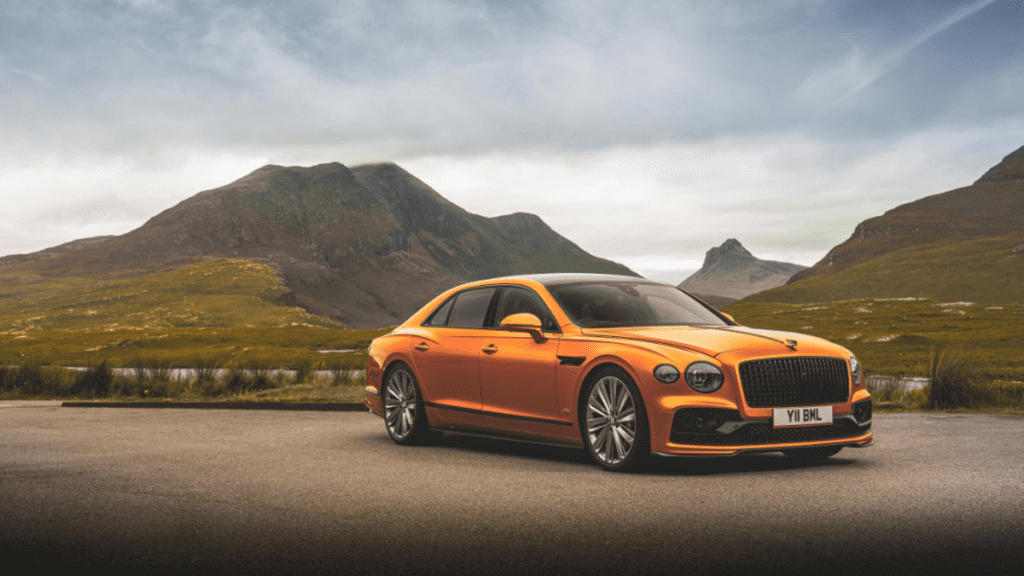Slate Asks: 'Why Would An Automaker Manufacture A Car With So Much Engine Power That It Requires An Eight-Speed Transmission?'

I came across a bit of commentary on the website Slate.com that was mostly about last week’s Bentley crash at the Rainbow Bridge, and it contained the following: “Why would an automaker manufacture a car with so much engine power that it requires an eight-speed transmission? The obvious answer is: because people pay a lot of money for it.” That is not the obvious answer. It is not the answer at all.
Learning to Drive Stick-Shift at Mini Manual Driving School
But, Slate has published some of the best stuff on road safety lately, and really, who am I to criticize a hastily written/edited take? I’ve let a few of those pass through my hands in my day. I’m not even going to really disagree with the post, though there are some points in it that make more sense than others. I agree with the thrust of it, that most people should not be driving cars, let alone very fast cars on public roads.
The post mentioned Michael Mann’s new “Ferrari” movie, and kind of blames Ferrari for creating the expectation that expensive road cars should be fast. Obviously that’s not true; speed was notably a desirable trait in cars well before Ferrari was a company. But the author does come away with this good point:
American roads are not race tracks, and American drivers are not professional athletes with years of experience driving at dangerous speeds. The faster drivers go on the road, the more likely they are to suffer a crash and for that crash to be fatal—a point that is both bluntly, stupidly obvious and more or less ignored by plenty of drivers, automobile marketers, and road designers.
But it really centers on the idea that the people who crashed their Bentley into the Rainbow Bridge should have been driving a slower car. The 2022 Bentley Flying Spur – which carried an easy-to-Google MSRP of $198,100, by the way – is indeed quite fast. However, even the slowest car on sale in America today would be capable of achieving the kind of speed it looked like the Bentley was carrying when it went airborne. If 55MPH is a deadly speed, and it sure is, should cars be limited to speeds lower than that? Can we geofence them? If so, just new cars? How would you retrofit the old ones? How long would it take current “high-speed capable” cars to cycle out of the vehicle fleet if we started selling them exclusively tomorrow? Anyway, the Slate post presents a lot of questions with no easy answer. Luckily, one of the questions, the one about transmissions, does have a pretty easy answer:
The number of gears in a transmission isn’t really a function of engine power. The rise in 6, 8, and 10-speed automatic transmissions was driven mostly by the pursuit of greater fuel efficiency. The upper gears are there so the engine can operate at lower RPMs at typical highway speeds and burn less fuel. Think about a bike – those higher numbered gears make pedaling effort easier.
The caveat is that you could theoretically use a traditional 4-speed automatic transmission with longer gears, or even just a super long 4th gear to achieve improved fuel efficiency. But that would come at a cost to performance that many consumers would deem unacceptable and may be unsafe in certain situations, and I still don’t know that you’d really get the kind of fuel efficiency you gain by adding gears, even if the 4-speed is lighter.
You could also use a Continuously Variable Transmission, which provides not eight or ten speeds but an endless number of effective ratios and delivers excellent efficiency, usually at the cost of performance and driver enjoyment.
So, a lot of companies have opted for 8- and 10-speed automatic transmissions because they provide a good balance of comfort, performance, and fuel efficiency, but the underlying reason for the rise of those gearboxes was fuel efficiency. It can’t be said that a very powerful engine necessitates an 8-speed transmission.
Anyway, that’s why the car has an 8-speed gearbox. Have a good one.




